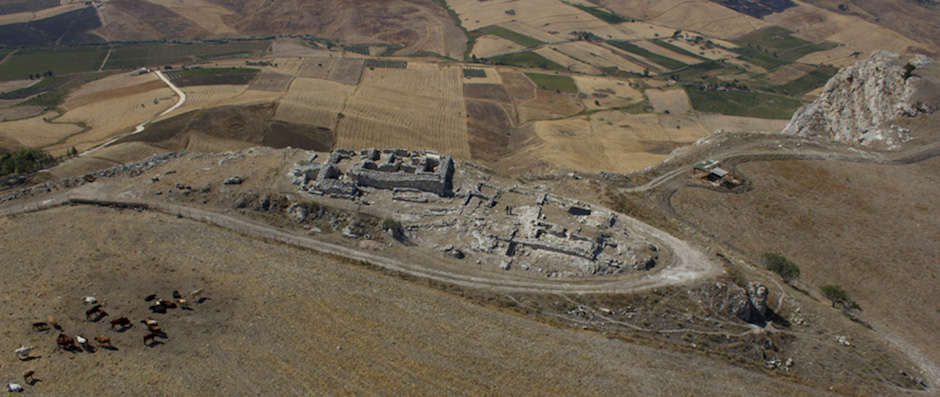The SAET Laboratory takes care of the final publication of excavation results in the ancient settlements of Segesta (Calatafimi / Segesta, Trapani), Entella (Contessa Entellina, Palermo) and Kaulonia (Monasterace Marina, Reggio Calabria). These archaeological sites have returned important information for the understanding of the historical and archaeological dynamics of the area. In addition to the expertise and equipment already available at the SAET, we collaborate with the Design and Restoration Laboratory of the University of Pisa (LADIRE) and with the SMART Laboratory of the Scuola Normale Superiore for the 3D processing and the Digital-, Virtual-, and Cyber-Archaeology experiments that accompany scientific publications and other forms of dissemination.

Segesta
The results of a 15-year-long research into Segesta’s agora are finally being published, after several preliminary articles presented in the Annali of the Scuola Normale Superiore and in various conferences. An imposing architectural complex has been brought to light, consisting in monumental terraces on three levels, following architectural style from Asia Minor and Central Italy. From the 2nd century b.C. to the beginning of the 3rd century A.D., the agora played a fundamental political role, becoming a Roman forum during the Augustan period. The great Hellenistic square was flanked on the north side by a monumental stoa with alae, one of the biggest currently known both for plan and elevation, with a length of more than 100 metres, and 19-metre-long alae on two levels.
During the Roman era, a small exterior square was built with private funds by M. Onasus and M. Sopolis, as witnessed by a large inscription. The square also hosted the macellum.
After a sporadic use in Late Antiquity, the area of the agora was once again occupied by a huge Norman-Swabian settlement.
The SAET’s editorial project intends to dedicate some entire volumes to the Segestan literary sources and inscriptions, and to the buildings of the upper terrace, including the bouleuterion. A separate volume will be devoted to the buildings of the Hellenistic agora.
Entella
In Entella, a settlement best known for the decrees issued by the boule and engraved on bronze tablets, the archaeological surveys performed by the Scuola Normale within the town, necropolis and the general area have brought to the scholars’ attention an urban and territorial context potentially rich in information about the history and archaeology of the inner west of Sicily. The SAET project involves the full publication of the documents found in the three complexes investigated in a more extensive and continuous way: the central area of the ancient town of Entella, with its late-archaic oikos and public warehouses from the Hellenistic Age, the medieval fortified palace and the area of the southern necropolis with its archaic artisan facilities, the funerary area in use from the Archaic Age to the late Hellenistic Age, and the Muslim cemetery nearby.
Kaulonia
The excavations performed in Kaulonia (Monasterace Marina, Reggio Calabria) by the Scuola Normale in collaboration with the University of Pisa involved the sanctuary of Punta Stilo, once only known for the Doric temple discovered by Paolo Orsi and now brought to public knowledge in its overall context, monumental articulation, and cultural expressions.
The contexts and materials found, including exceptional epigraphic documents relating to the cults practiced in the sanctuary, have been partially published in recent years.
The scientific objectives of the SAET project include a topographic reconstruction of the sanctuary, a chronological definition of structures and cultural evidence, the analysis of the issues related to the cults, and a systematic study of the classes of materials found.
At the end of the project, Kaulonia will offer a major contribution to the understanding of the dynamics of the Achaean colonisation of the West and to the reconstruction of the life within an urban sanctuary in Magna Graecia.
Scientific coordinators: Anna Magnetto, Carmine Ampolo, Maria Cecilia Parra
Contributors: Agata Abate, Oriana Silia Cannistraci, Cesare Cassanelli, Alessandro Corretti, Donatella Erdas, Antonino Facella, Vanessa Gagliardi, Nicola Giaccone, Maria Ida Gulletta, Pietro Manti, Chiara Michelini, Riccardo Olivito, Marianna Perna, Emilio Rosamilia, Azzurra Scarci, Alfonsa Serra, Emanuele Taccola, Maria Adelaide Vaggioli
Data acquisition C. Cassanelli, A. Corretti, A. Palla
Processing Emanuele Taccola


